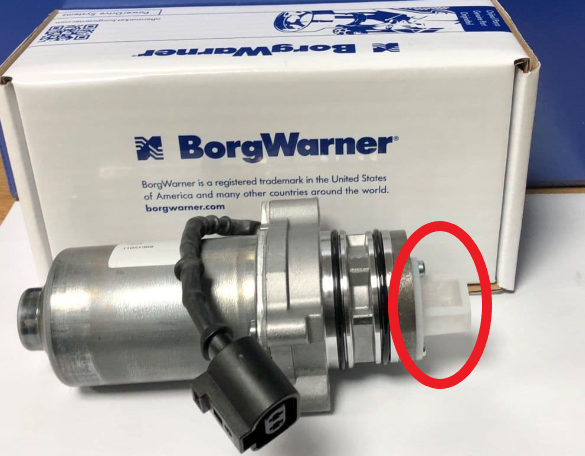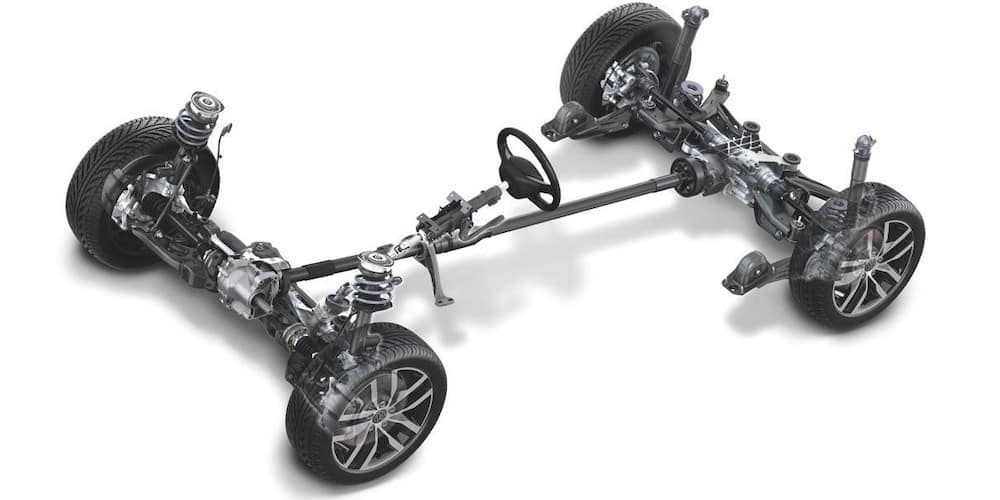Owning a Haldex-equipped Volkswagen or Audi is convenient when you need the AWD, but they require regular service to operate effectively. Luckily, we’re here to help build your confidence in the garage with this handy guide to all things Haldex.
What is a Haldex AWD System?
The Haldex system derives its name from the Haldex coupling patented by rally driver Sigvard ‘Sigge’ Johansson that was eventually sold to its current company who supply VW/Audi with these AWD systems for use in passenger vehicles. The Haldex system allows front-wheel-drive vehicles to send power to their rear wheels when the front wheels experience a loss of traction. The Haldex unit actuates a clutch that transfers power to the rear wheels, which gives the car temporary AWD. This setup differs from other AWD systems by acting strictly as a helper and not a root source for AWD. Every vehicle equipped with a Haldex system is a front-wheel-drive layout that can transfer power to the rear wheels under certain conditions rather than a full-time AWD system like Quattro or Subaru’s Symmetrical AWD.
How does it work?
While VW calls their AWD systems ‘4Motion’ from a marketing perspective, the system is mechanically a Haldex unit and does not offer full-time AWD. Similarly, some Audi systems dubbed ‘Quattro’ are not true Quattro drive systems, they too are Haldex-based. Most notably, the 8P A3 shares its drivetrain with the MK5 R32 despite calling the AWD ‘Quattro.’ The Haldex AWD uses the ECU systems that monitor traction at the wheels to determine when to send power and how much to send to the rear wheels. When it senses the front wheels slipping, either under poor traction conditions, when cornering, or during a hard launch, the ECU hydraulically engages clutches through the coupling, which transfers power to the rear wheels. Currently, there are 5 generations of Haldex systems commonly found on VW and Audi platforms, which we have listed below.
Gen 1: 1998-2001
The first generation of the Haldex we know today was officially released and used in the Audi MK1 TT and VW MK4 R32. This system is reactive under high slip conditions such as launches and inclement weather, meaning it can bias power from 90-10 front to rear distribution to 50/50 power distribution in less than 1/2 of a wheel’s rotation. Gen 1 Haldex systems require regular fluid and filter changes for proper operation.
Gen 2: 2002-2004
The second generation Haldex system is commonly found in the Audi MK2 TT, Audi 8P A3, and the VW MK5 R32. This system is also reactive and also requires a filter change when servicing. Gen 2 systems are a slightly refined version of the Gen 1 Haldex System and also bias power from 90-10 to 50-50 in a 1/4 wheel turn of slippage.
Gen 3: 2004-2008
This generation was the first system to be proactive rather than reactive. The Gen 3 system can keep preloaded tension on the clutch packs in the rear diff and can power the rear diff before any front slip occurs. Sadly, this system was never available in North American markets with any Audi or VW, but if you have a Volvo or Land Rover, your vehicle may have a Gen 3 Haldex that also requires a filter change when maintenance service is due.
Gen 4: 2008-2012
This system is the last to use a filter and is the most confusing generation in terms of models equipped with a Gen 4 Haldex. The VW MK6 R up to 2014 has this system, but Tiguans after 2012 have the Gen 5 system. It is best to use your VIN to double-check if your vehicle has a Haldex system with or without a filter. The same goes for Passats of this era.
Gen 5: 2012+
This is the first Haldex system that does not have a filter built into the system, but there is a small screen pump that you can remove during service that should be cleaned before your service is complete. The process is simple and you can reinstall the screen with 2 small screws after you have removed it and cleaned off any debris. Be sure to inspect your VIN or contact our sales team to confirm your VW or Audi is equipped with this system for 2012 model year vehicles.
How do I service my Haldex System?
Servicing your Haldex is about as straightforward as changing your oil. To service your Haldex, you will need basic hand tools, a fill tool like our Schwaben Fluid Pump to fill the system, Haldex gear oil, fill and drain plugs, and a Haldex filter if you have a Gen 1-4 Haldex. Completing the Haldex service also requires a relearning procedure once the fluid and filter (when required) have been replaced. For the relearn process, you will need access to VCDS with VAGCOM or inquire about it at your local VW dealer to perform the relearn.
1: To know what system is equipped on a vehicle from 2012+, either physically inspect your Haldex unit or contact our sales staff with your VIN. If your Haldex looks like the one on the left, you have a Gen 4 system with a filter. If it looks like the one on the right, you have a Gen 5 system without a filter.

2: The necessary tools you will need to complete the service include normal hand tools for working on German cars, an Assembled by ECS Haldex Service Kit, a Schwaben fluid pump tool to fill the system after it is drained, and a filter (Gen 1-4). The Schwaben Haldex Oil Filter Wrench can also make your life easier when removing the rear differential filter, while our Schwaben Haldex 90 Degree Adapter Kit helps reach into tight spaces for the most convenient Haldex service.

3: Raise the vehicle in the air and ensure it is level front to rear, or slightly lower in the rear to drain as much fluid as possible from the Haldex drain plug.

4: Remove the fill plug and filter. Replace the filter before installing the drain plug and installing the new filter, torquing them both down to spec. On Gen 5 vehicles, there isn’t a “serviceable” filter, but there is a screen that is located on the Haldex pump that we suggest you remove, clean, then reinstall. If you choose to do this, be careful when removing and reinstalling the screws on the screen, as you cannot buy this screen separately from VW or Audi. Once cleaned, carefully reinstall the large screen and the Haldex pump.

5: For the last step, fill the system through the fill plug until fluid comes out of the fill hole, then install the fill plug and torque the plug to spec.
Now you officially have serviced your Haldex! If you have any questions, feel free to reach out to any of our knowledgeable Sales reps or our Technical Service Advisors and we will be happy to answer any questions or concerns you have about your VAG vehicle and Haldex system. For any other maintenance you might need, our catalog of Audi parts and VW parts is ready to help you tackle that next DIY.







Development Vehicles didn’t jell until reading the list. Imagine, if you will, 1986 stripped Suburban with just over 50k miles driving around the flight line at Moffat Field NAS/Ames NASA research base. A very basic 350ci engine, no interior options like radio, headliner… It does have 2 alternators, 3 batteries all feeding a panel in back. Their radio was mounted behind 2 row of seats under a panel warning, 11,000 VOLTS. Called the mother ships I guess. Body is clean, interior is dusty and nothing broken, dash though has age/sun cracks in it. It could be good for towing one car trailer when you attend shows. I am replacing wiring to coils in 98 A4 and curious how a 229.00(?) set is 3x better than the 74.00 set. The lowered racer Audi in pics above looks capable of some serious track runs. An acquaintance has convertible bug in same pink over white as pictured. The history of ECS is well written and makes for a good read. Enjoy
Marty, I wish I had your confidence buddy. No clue what you’re trying to ask or say, but we certainly appreciate your enthusiasm.
I have a 2006 Audi A4 Quattro. I don’t think I have the Haldex system, from the discription? But I do have a slight serging of the transmission while driving. Something like an on off on off sensation which is continous, during exceleration and driving at highway speeds. Shifts fine, the RPM’s fluxuate about 200-300. I want to check the fluid level, no leaks by the way. Better yet change the filter and new fluid. Where is the fill plug? I have done this work on other cars that I own. I have a VAGCOM CABLE with software in case it is an issue that can be solved in one of the menus. Any ideas?
That’s an actual quattro system, not a Haldex. For a DIY, we should have one on our YouTube. If we don’t, Audizine would be a great place to check!